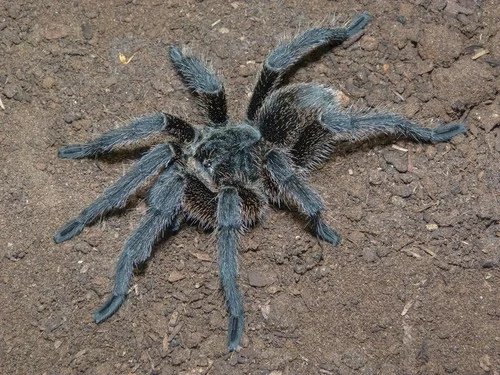Natural Enemies of Grammostola pulchra: Mammals, Birds, and Other Arachnids
Introduction: Life in the Wild
In their native grasslands and scrublands of southern Brazil and Uruguay, *Grammostola pulchra* are not apex predators. Despite their size and venom, they form part of the food web and face threats from various natural enemies. Understanding these predator-prey relationships provides insight into their behavior and ecological role.
Mammalian Predators
Several mammals inhabiting the same regions are known or potential predators of tarantulas:
- Coatis (Nasua nasua): These opportunistic omnivores are known to dig for and consume large invertebrates, including spiders and tarantulas. Their dexterity and claws make them effective hunters.
- Skunks: Some skunk species are resistant to venom and readily prey on spiders and ground-dwelling insects.
- Foxes: Pampas foxes (*Lycalopex gymnocercus*) are opportunistic and may prey on tarantulas if encountered.
- Armadillos: While primarily insectivorous, larger armadillo species might occasionally consume tarantulas they unearth.

Avian Predators
Birds, particularly ground-foraging species and birds of prey, can also pose a threat:
- Seriemas (Cariama cristata): These large, long-legged birds actively hunt reptiles, insects, and spiders on the ground.
- Roadside Hawks (Rupornis magnirostris): Opportunistic hunters that may take tarantulas, especially wandering males.
- Burrowing Owls (Athene cunicularia): While primarily eating insects and small rodents, they might occasionally prey on tarantulas near their burrows.
Other Arachnids and Invertebrates
Tarantulas are not immune to predation from within their own class or phylum:
- Tarantula Hawks (Pepsis spp.): These large Pompilid wasps are famous specialized predators. The female wasp paralyzes a tarantula with her sting, drags it to a burrow, and lays an egg on it. The wasp larva then consumes the living but paralyzed tarantula.
- Other Spiders: Larger, more aggressive spiders might prey on smaller or younger *G. pulchra*. Cannibalism can also occur, especially between males and females during mating encounters or among spiderlings.
- Centipedes: Large predatory centipedes could potentially overpower and consume a tarantula, especially a smaller one.
Knowing about tarantula natural predators helps understand their defensive behaviors.
Defense Mechanisms
To counter these threats, *G. pulchra* employs several defenses:
- Burrowing: Spending most of their time in deep burrows provides significant protection from surface predators.
- Nocturnal Activity: Being more active at night helps avoid diurnal predators like many birds and coatis.
- Threat Posture: Rearing up on hind legs and exposing fangs serves as a visual warning.
- Biting: Used as a last resort for defense.
- Urticating Hairs (Limited Use): While possessing Type III urticating hairs, *G. pulchra* is known to be much less reliant on flicking them compared to other New World genera like *Brachypelma* or *Theraphosa*. They may rub them off defensively if directly grabbed.
Survival Strategy: The combination of a hidden lifestyle within burrows and defensive capabilities allows *G. pulchra* to coexist with a range of potential predators in its natural environment.
Further Reading: Learn about the fascinating Tarantula Hawk wasps on Wikipedia.